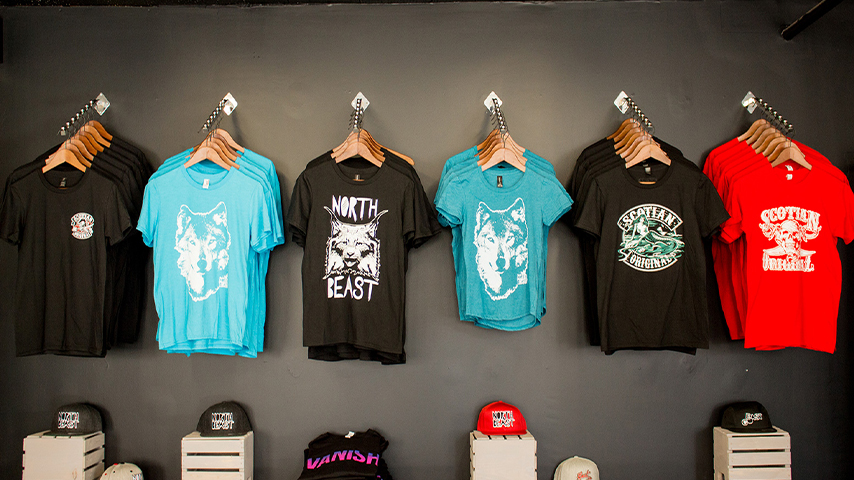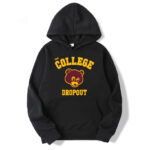Custom T-shirt printing has evolved significantly over the years, offering a variety of methods to suit different needs, designs, and budgets. Whether you are a small business owner, a designer, or simply someone who wants to create personalized apparel, understanding the various printing techniques is crucial. This article explores some of the most popular custom T-shirt printing techniques and their unique features.
Screen Printing
Screen printing, also known as silk screening, is one of the oldest and most popular methods for custom T-shirt printing.Making a screen or stencil and then applying ink layers to the printing surface is the process.
Advantages
- Durability: Produces vibrant, long-lasting prints that can withstand multiple washes.
- Cost-Effective: Ideal for large orders as the setup cost is high, but the cost per unit decreases with volume.
- Versatility: Suitable for a wide range of fabrics and materials.
Limitations
- Setup Time: Requires significant preparation time, making it less suitable for small orders or single prints.
- Complex Designs: Not ideal for intricate designs with many colors due to the need for separate screens for each color.
Direct to Garment (DTG) Printing
Digital textile printing (DTG) is the process of printing designs directly onto fabric utilizing a specialized inkjet printer and water-based inks. This method is similar to printing on paper and allows for high-resolution designs.
Advantages
- Detail and Color: Capable of producing highly detailed and colorful prints, making it perfect for complex and photo-realistic designs.
- No Minimum Order: Ideal for small batches or single prints since there is minimal setup required.
- Soft Feel: The ink soaks into the fibers of the fabric, resulting in a soft feel on the printed area.
Limitations
- Durability: Prints may not be as durable as those produced by screen printing, especially after multiple washes.
- Fabric Limitations: Works best on 100% cotton fabrics and may not be as effective on other materials.
Heat Transfer Printing
Transferring designs onto T-shirts by the use of heat and pressure is known as heat transfer printing. This method includes various sub-techniques such as vinyl heat transfer and digital heat transfer.
Advantages
- Versatility: Suitable for printing on various fabrics and materials.
- Detail and Color: Can produce detailed and colorful designs, including photo prints.
- Flexibility: Ideal for customizing individual items or small batches.
Limitations
- Durability: Prints may crack or fade over time and with repeated washing.
- Feel: The printed area may feel slightly heavier and less breathable than the rest of the shirt.
Sublimation Printing
Polyester textiles may have dye transferred onto them using sublimation printing. The dye turns into gas and bonds with the fibers, resulting in a vibrant, permanent print.
Advantages
- Durability: Produces long-lasting prints that do not crack or peel.
- Color Quality: Capable of producing high-quality, vibrant colors.
- Feel: The print is part of the fabric, ensuring a smooth and breathable finish.
Limitations
- Fabric Restrictions: Limited to polyester fabrics or polymer-coated items.
- Cost: Higher cost for the special inks and polyester materials.
Vinyl Cutting
Vinyl cutting is a process that uses heat pressing to transfer graphics from colored vinyl sheets onto a T-shirt. This method is often used for simple designs, logos, and lettering.
Advantages
- Durability: Vinyl prints are highly durable and can withstand many washes.
- Vibrancy: Produces bright and solid colors.
- Special Effects: Available in various finishes, including matte, glossy, glitter, and reflective.
Limitations
- Complexity: Not suitable for complex or highly detailed designs.
- Feel: The vinyl may feel heavier and less flexible on the fabric.
Conclusion
Each custom T-shirt printing technique offers unique advantages and is suitable for different types of projects. Screen printing is ideal for large orders with simple designs, while DTG printing is perfect for detailed and colorful prints. Heat transfer and sublimation are versatile for various materials, and vinyl cutting excels in creating durable and vibrant logos. Understanding these techniques will help you choose the best method for your custom T-shirt printing needs, ensuring high-quality and visually appealing results.



